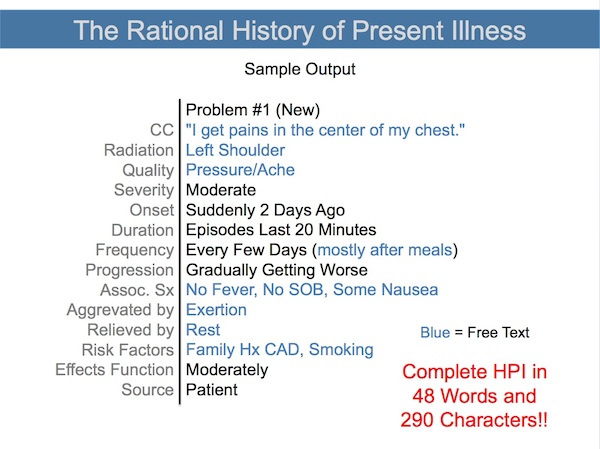The best clinical documentation is that which gives to the reader the greatest amount of information in the shortest time with the fewest pixels.
Paraphrased from Edward R. Tufte
The Visual Display of Quantitative Information
During April 2014 I gave a talk at an EMR meeting concerning the changes manifest in the everyday clinic note. Most are familiar with various approaches to generating notes that meet all requirements for billing, compliance, and liability. Patient care and physician efficiency frequently suffer. I am particularly concerned about “note bloat” and the tendency of automated systems to add noise and imprecision to medical documentation. I’ve been working with our EMR vendor to create a better approach to the History of Present Illness.
This week I launched the The Rational History of Present Illness project to develop and promote better documentation tools.
This is sample output from a template driven tool that does NOT attempt to generate english prose. For this hypothetical patient, the structured approach yields a complete HPI in 48 words and 290 characters (60 words if you count the labels). Also note the judicious use of directly typed input (in blue). One of the biggest problems I see with EMR templates is they over specify. Why check a box for a phrase that is sort of what you’re thinking when in a few words you can say precisely what you mean?! Now contemplate how easy it is to visually scan and assimilate the information. As Dr. Tufte would say, “there is very little Pfuff!” Least Ink in action!!



You can follow any responses to this entry through the RSS 2.0 feed.